We came to Siem Reap to visit the Angkor monuments. Angkor Wat is a World Heritage Site, so many people are probably familiar with, but Angkor Wat is not the only Angkor-era site. There are many sites scattered around Angkor Wat.
When visiting Angkor the ticket includes the sites around Angkor Wat, so it would be a shame to leave Siem Reap after only visiting Angkor Wat!
We bought a ticket valid for three days and after visiting Angkor Wat on day 1 we also visited Angkor Thom which is nearby.
About Angkor Thom
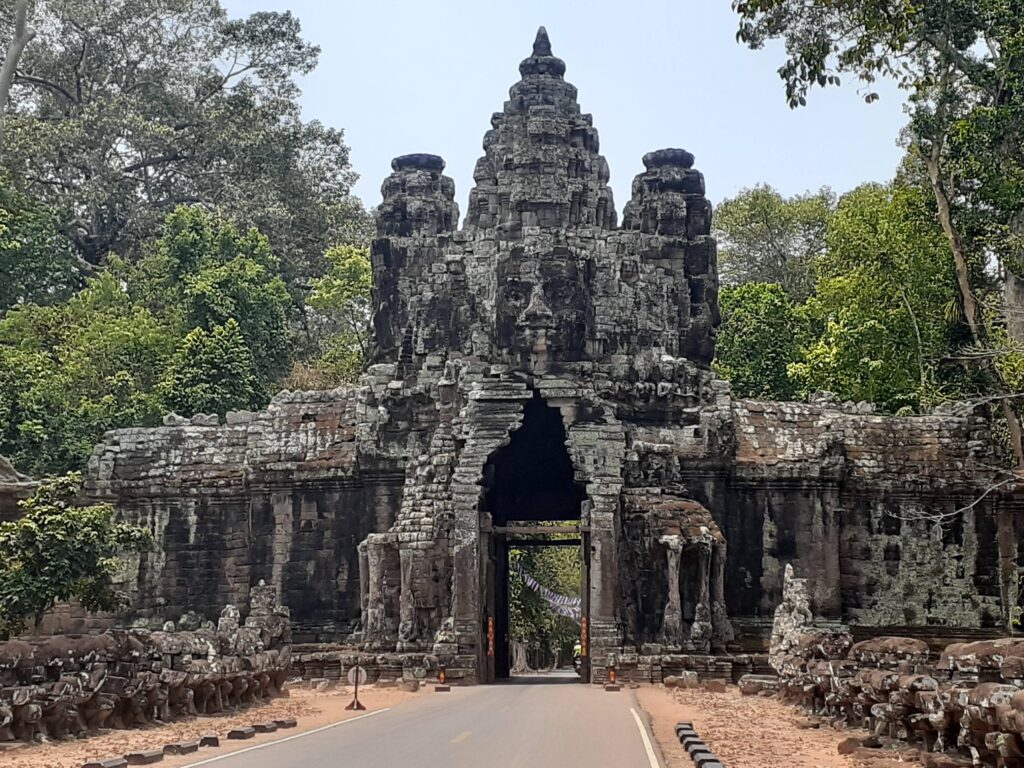
Angkor Thom (Angkor Thom) covers an area of approximately 3 km square and I’d located just north of Angkor Wat. While Angkor Wat is a temple, Angkor Thom is a city site surrounded by an 8 m high laterite wall, which is surrounded by a 100 m wide moat. At its peak, Angkor Thom was a city with a population of 100,000, and the word ‘Thom’ means ‘large’. Although registered as a World Heritage Site as the Angkor Complex, Angkor Thom itself is an archaeological complex with multiple attractions.
If you look at it on a map, it is obvious that it is much larger than Angkor Wat. However, it is not necessary to visit the entire site like Angkor Wat, and it is easy to cycle around the scattered sights.
Construction of Angkor Thom began in 1020, during the reign of Suryavarman I. It was continued by successive kings, but reached its peak in the late 12th century when King Jayavarman VII transferred the capital from Angkor Wat to Angkor Thom, where it continued to flourish until the early 15th century.
Angkor Thom is a fortified city, with five gates – the Great Southern Gate, the Great Northern Gate, the Great Western Gate, the Gate of the Dead and the Gate of Victory. Two gates, the Victory Gate and the Gate of the Dead, were placed on the east side because of their different functions.
The Victory Gate was used to welcome the victorious and triumphant troops, who received the king’s blessing on the Terrace of the Elephants beyond. The Gate of the Dead, on the other hand, was the path for soldiers who had lost their lives. At the Bayon temple beyond, they received prayers for paradise.
The towers of the gate are impressive with carvings of the Bodhisattva Avalokiteshvara. This image of the Bodhisattva’s face, which can be said to be the image of Angkor, echoes that of the Bayon temple.
Outside each of the city gates is a bridge with a Naga on the parapet and a powerful statue of Asura pulling the Naga. The Asura statues at the busy South Gate have been restored, but at the other gates you can see statues that are close to their original state.
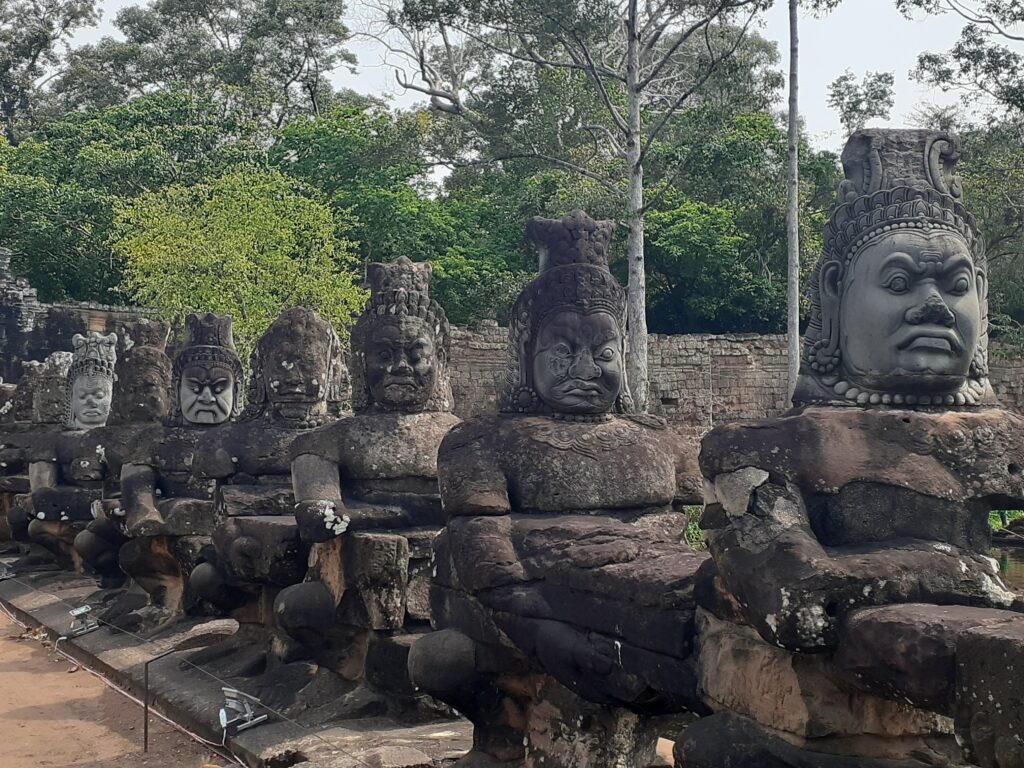
Angkor Thom as a city is thought to have been designed in the motif of the Hindu cosmology, with the Bayon temple in the centre, symbolising Mount Meru, the centre of the universe.
The giant precious face on the side of the tower rising perpendicular to the Bayon temple is known as the ‘Khmer Smile’. Other highlights include the Terrace of the Elephants and the Terrace of the Rai Kings, which should be visited in plenty of time.
Bayon temple
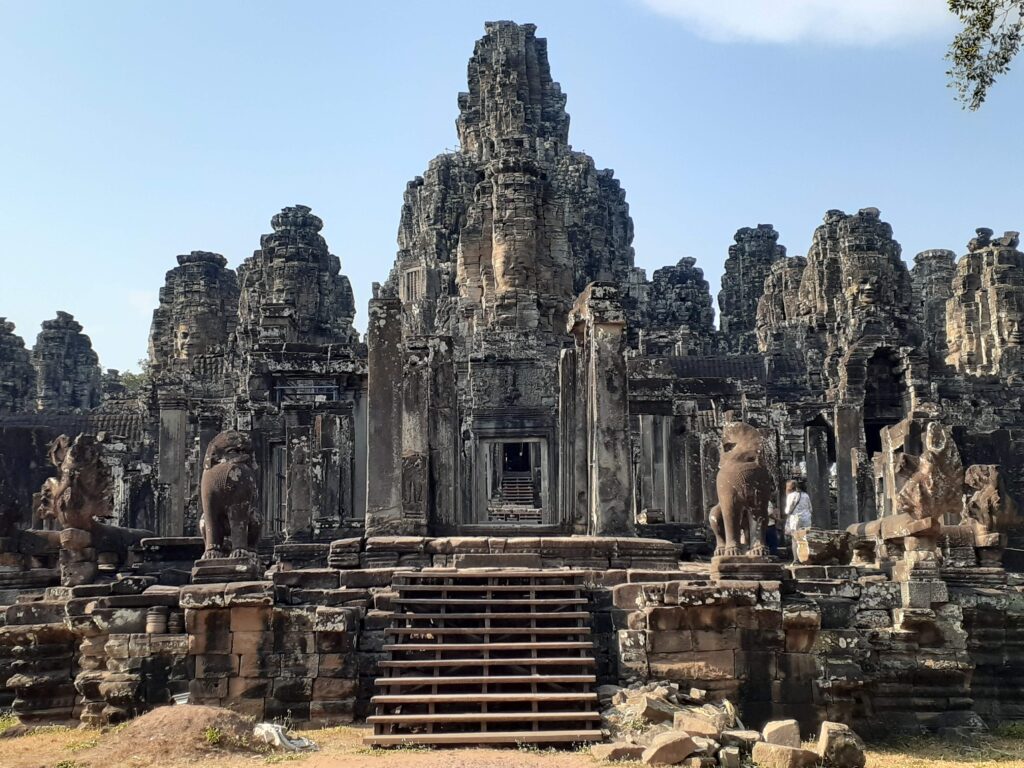
Located at the heart of Angkor Thom, the Bayon temple is the first place you should visit. We visited this temple on the day we arrived in Siem Reap, after Angkor Wat.
It is a mountain temple built during the reign of King Jayavarman VII. It was designed to reflect the Hindu cosmology and symbolises Mount Meru, the centre of the world.
The towers, which are forested like a number of steeply rising mountains, are carved on all four sides with huge human figures. They are around 2 m in size, and although the prevailing theory is that they are smiling images of Bodhisattva Avalokiteshvara, some believe that Jayavarman VII has been deified. These precious faces are known as ‘Khmer smiles’ and make an impression on the temple.
The Bayon temple has a 43 m high main hall surrounded by a double corridor, but the elements are so closely packed together that there is almost no space between them. In contrast to Angkor Wat, which has a sense of openness and allows visitors to take their time in touring the temple, this temple has the atmosphere of a towering mountain, and even gives a sense of oppression.
Built facing east, the temple is almost at the centre of Angkor Thom and connects to the crossroads. Its layout symbolises Mount Meru, the centre of the universe. The royal palace is located to the north-west of the temple, which shows the importance of Bayon temple in Angkor Thom.
Baphuon Temple

Baphuon Temple, located northwest of Bayon Temple, was built around 1060 by Udayadichavarman II as a temple dedicated to Lord Shiva. It has a three-tier pyramid structure and is also classified as Baphuon style.
This temple is also large and majestic and is a must-see.
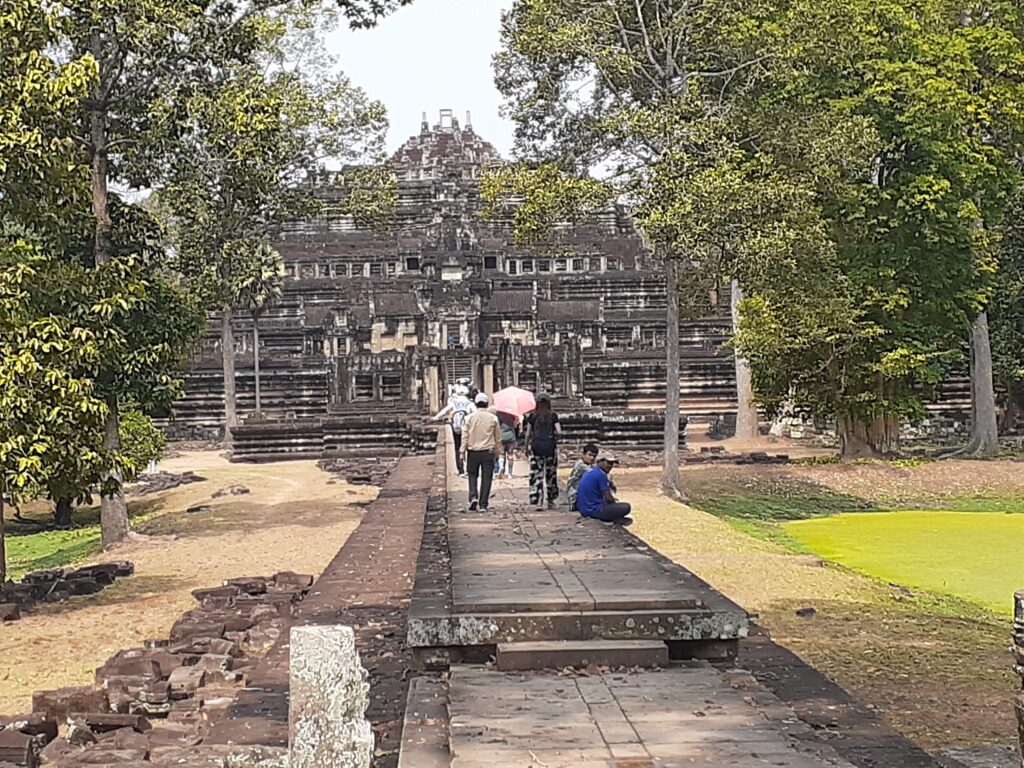
The temple is surrounded by a sandstone perimeter wall extending 425m east to west and 125m north to south. The 200 m long and approximately 1 m high path leading from the East Pagoda Gate has a cross terrace in the middle, leading worshippers to the Inner Pagoda Gate.

Looking back at the approach from the temple, it can be clearly seen that it is a cross passageway.
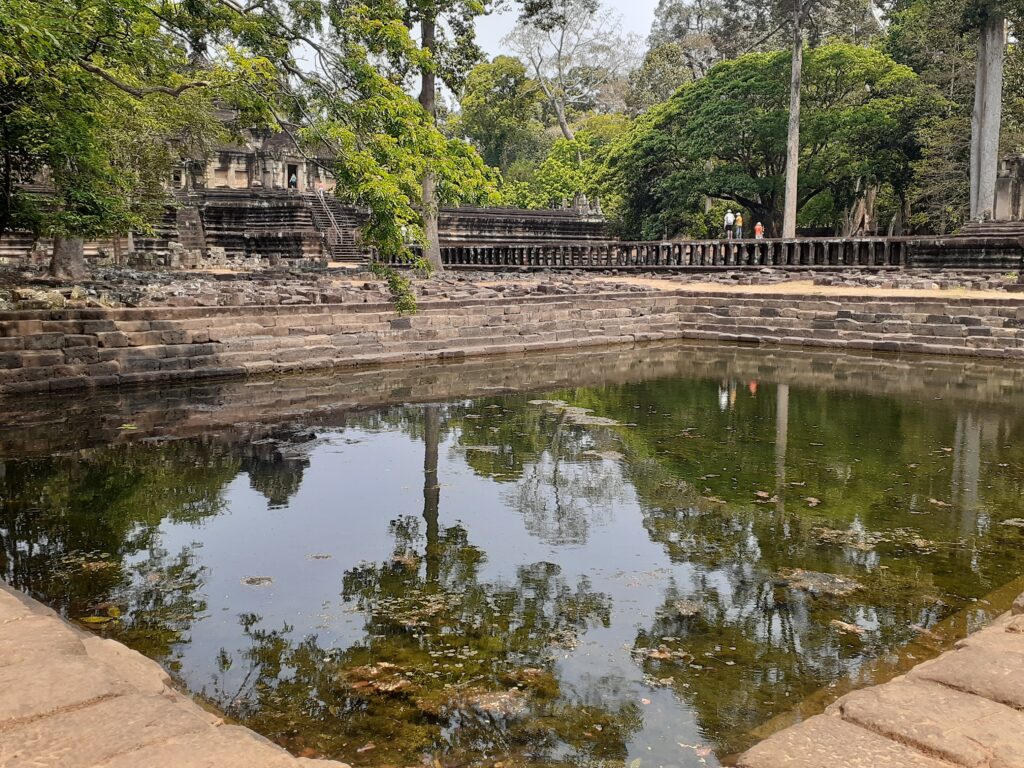
A moat was built beside the approach road, with the jungle greenery reflected in the water.
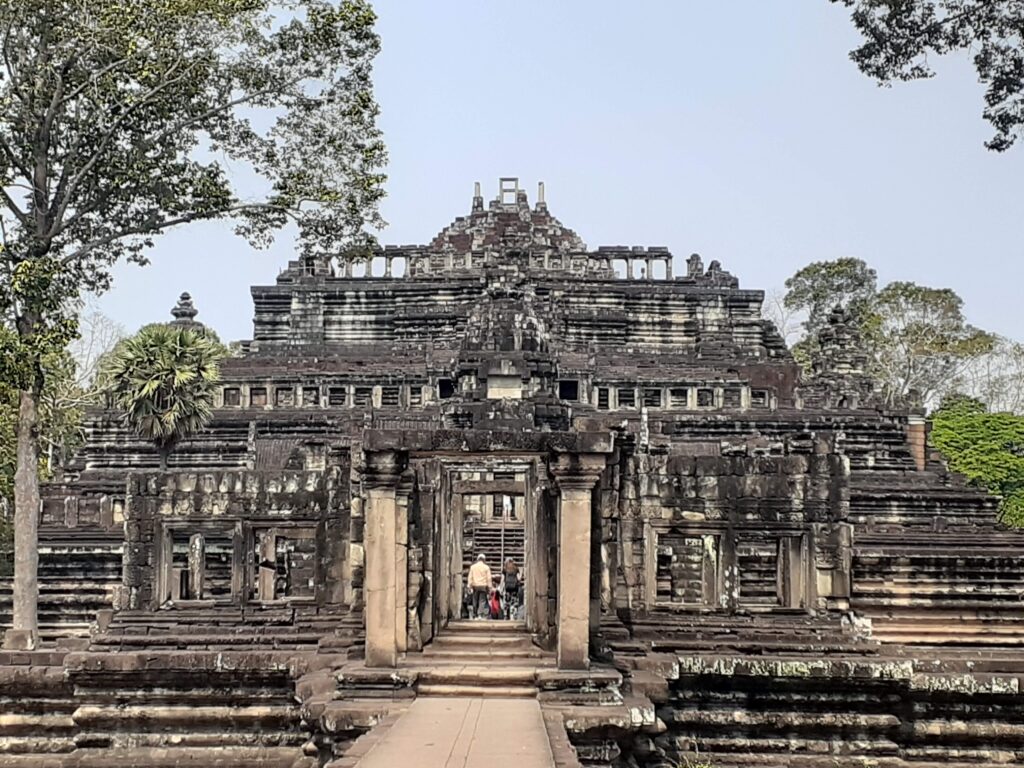
Crossing the approach road leads to the central sanctuary of the powerful temple. The temple is also known as a mountain temple, and its appearance is breathtaking.
The base of the pyramid stretches 120m east to west and 100m north to south. It is built on three levels, each with its own corridor. The main central shrine is a single structure, which was once 50 metres high.
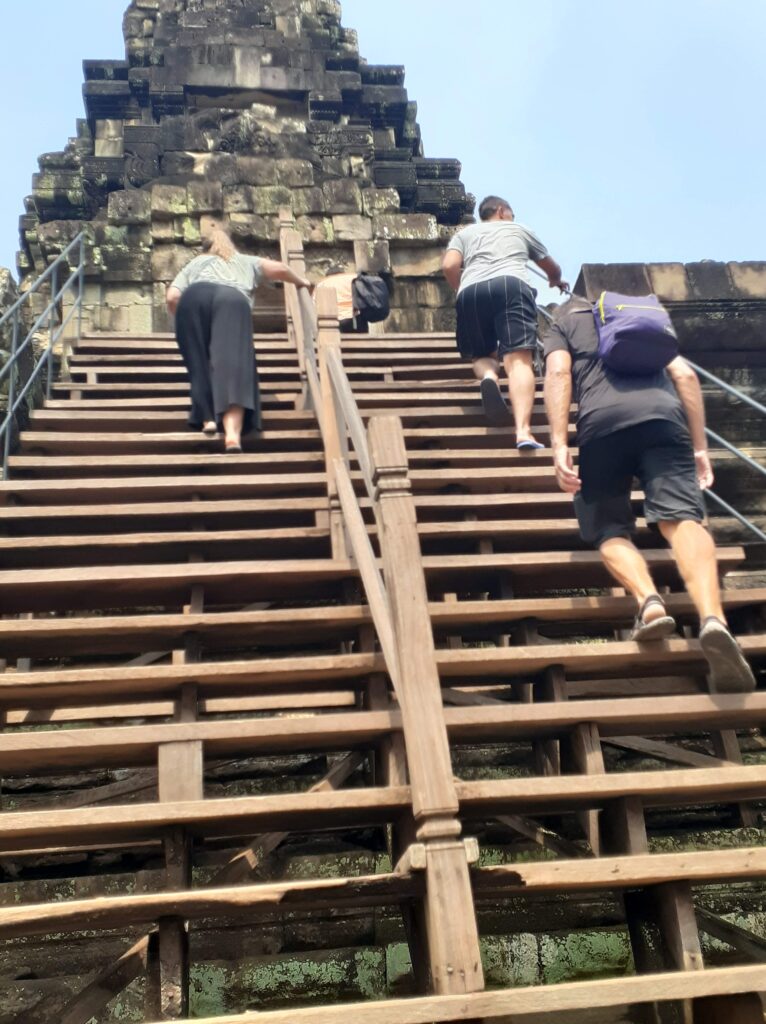
A wooden staircase has been installed for visitors, so that they can climb up these steep steps to enter the building.

At the end of the 13th century, Zhou Dakwuan, who visited the area as an envoy of the Yuan dynasty, wrote in his ‘Manrou Fudoki’ that the temple had ‘a single copper tower (bapuon), even taller than the Bayon temple tower (45 metres high)’. The description “copper pagoda” suggests that it was built of copper at that time.
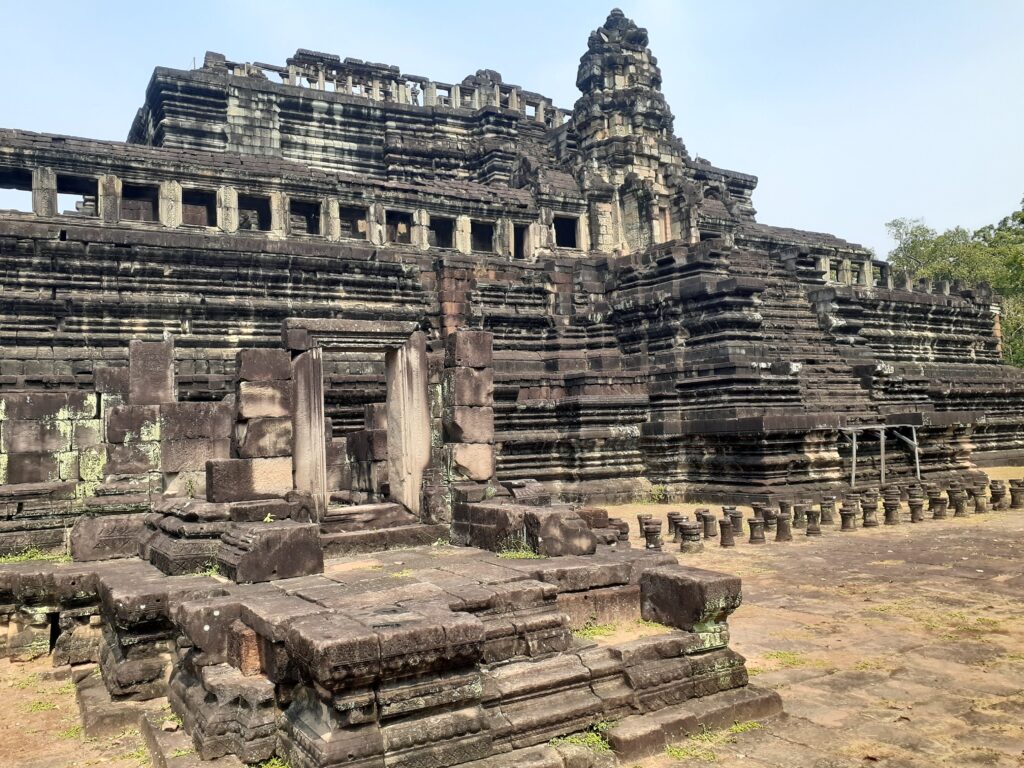
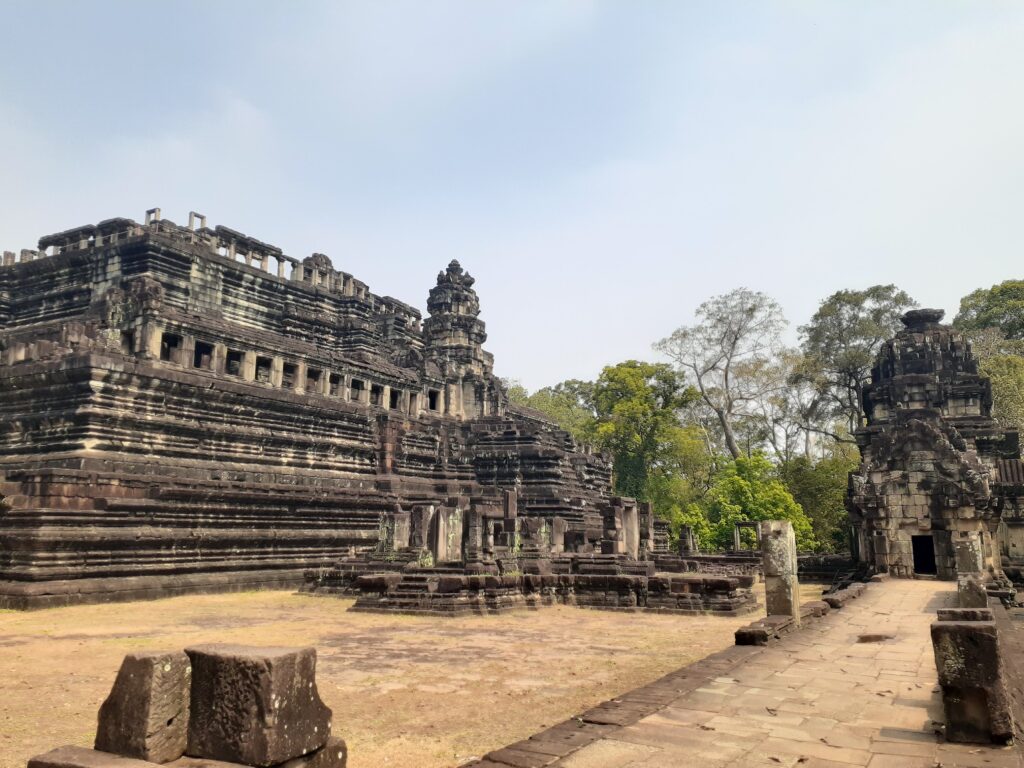
The main gate faces east, so it is better to visit in the morning to avoid backlighting and take beautiful photos. We visited on the morning of our second day in Siem Reap.
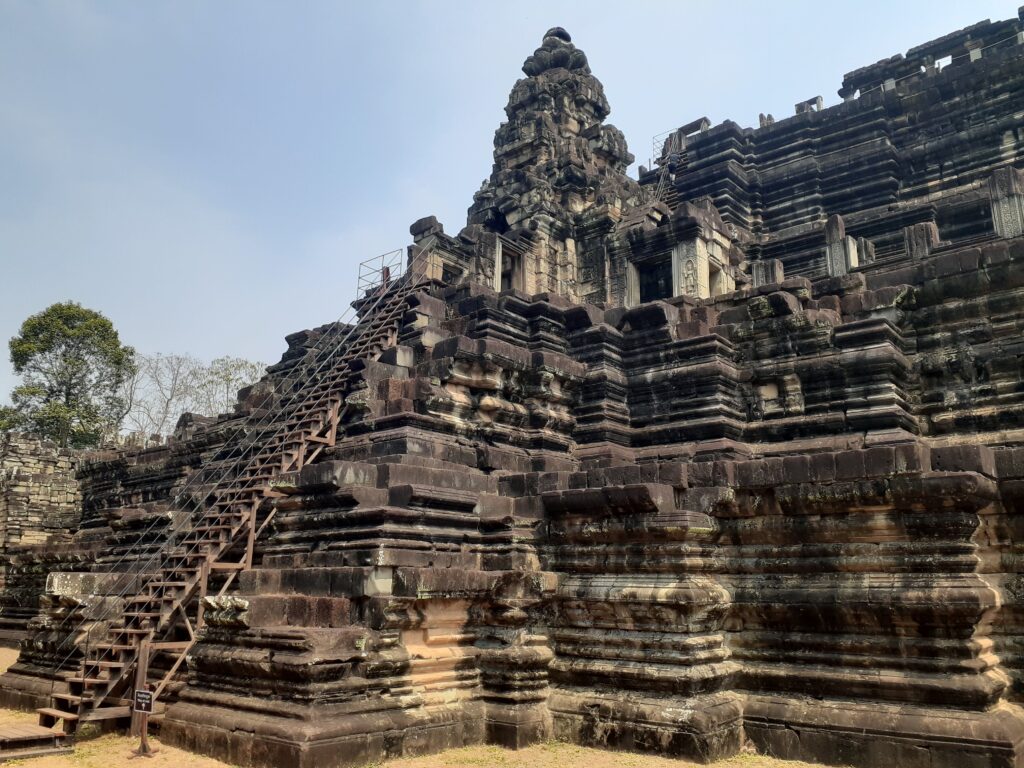
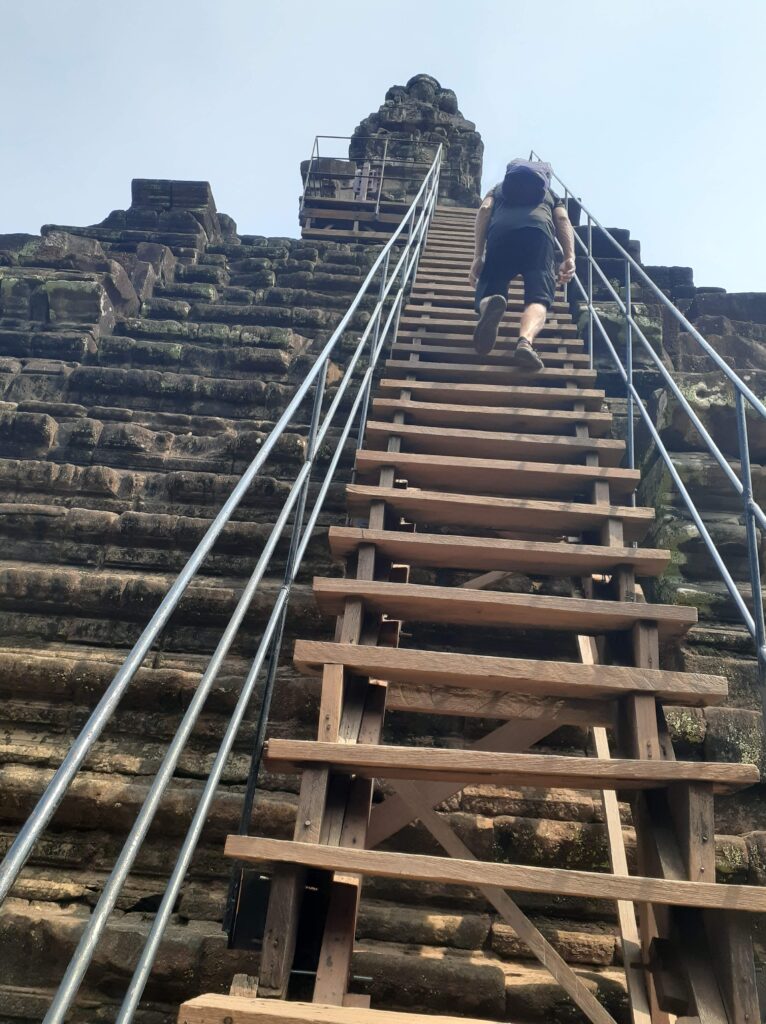
There are stairs to the second-level corridor for tourists, but they are quite steep. Some of the older tourists were hesitant to go up, as were some foreigners.
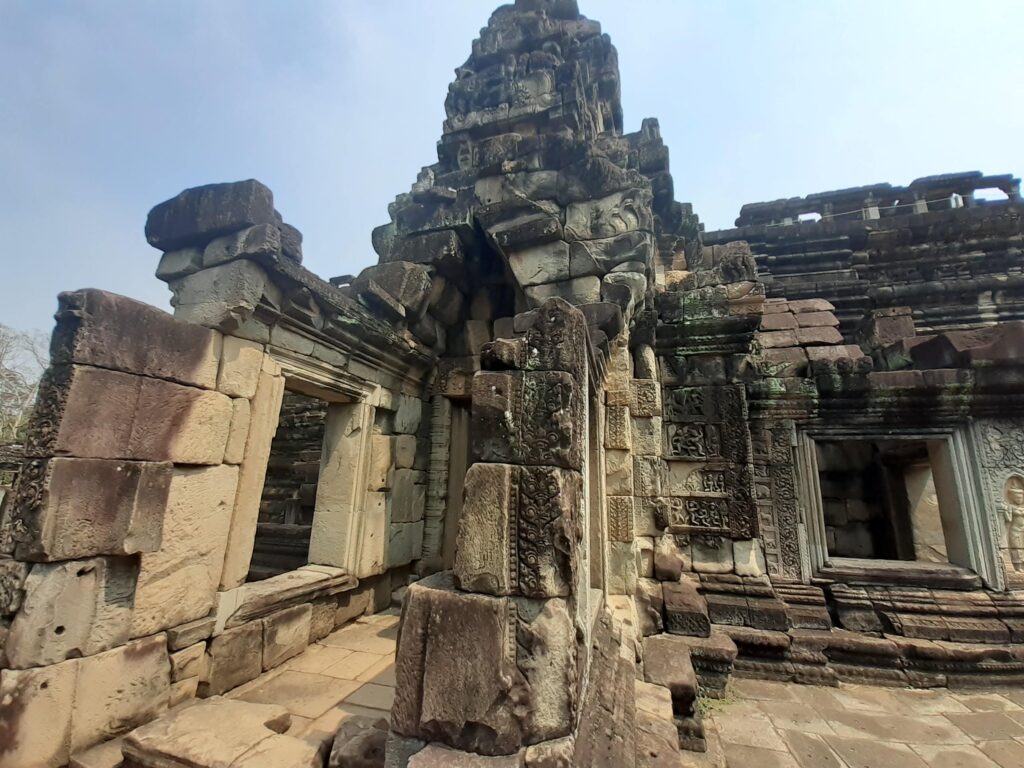
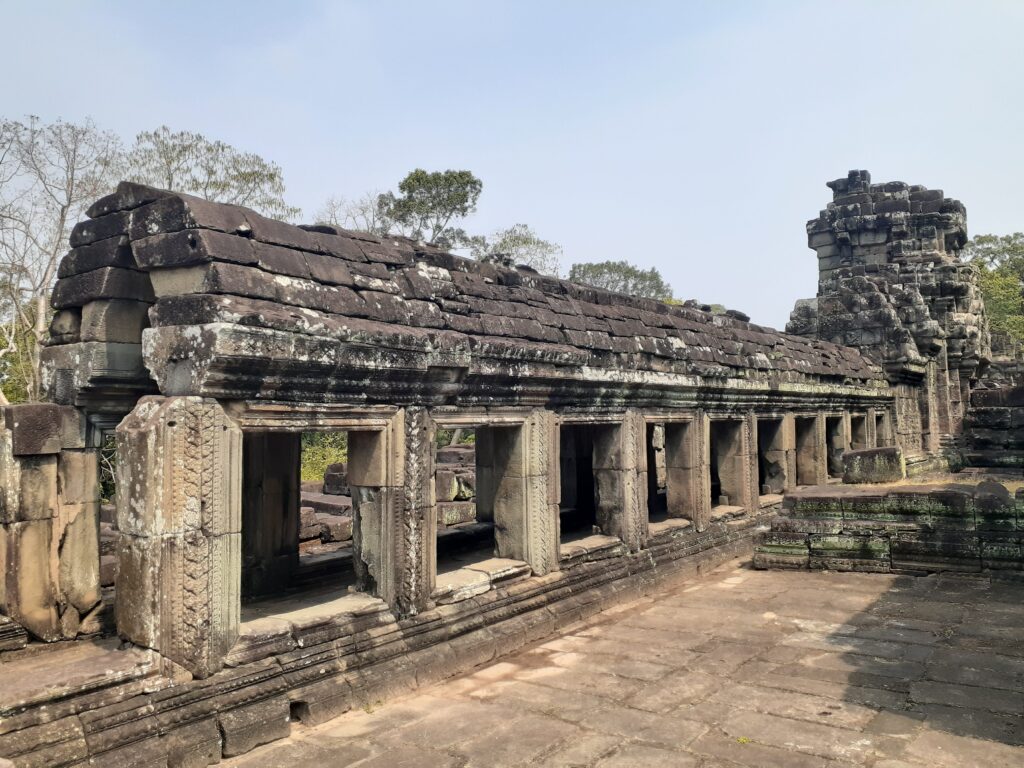

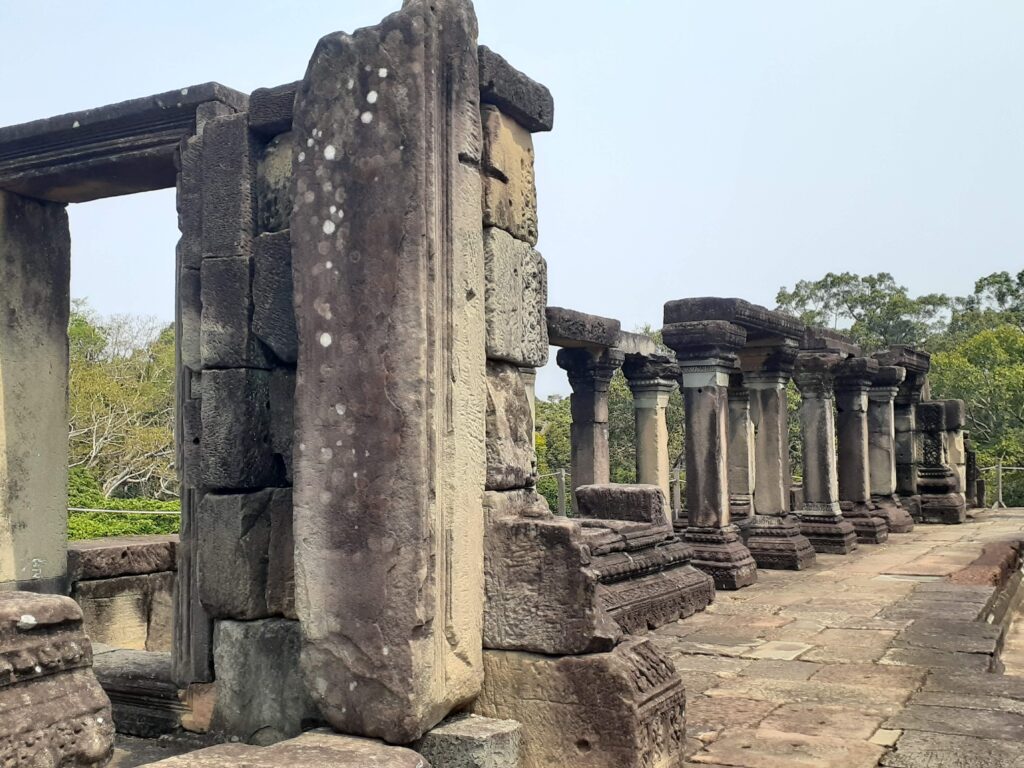
The topmost terrace is mainly left with only a few scattered columns, but there are some roofed areas where reliefs can be seen on the ceiling columns.
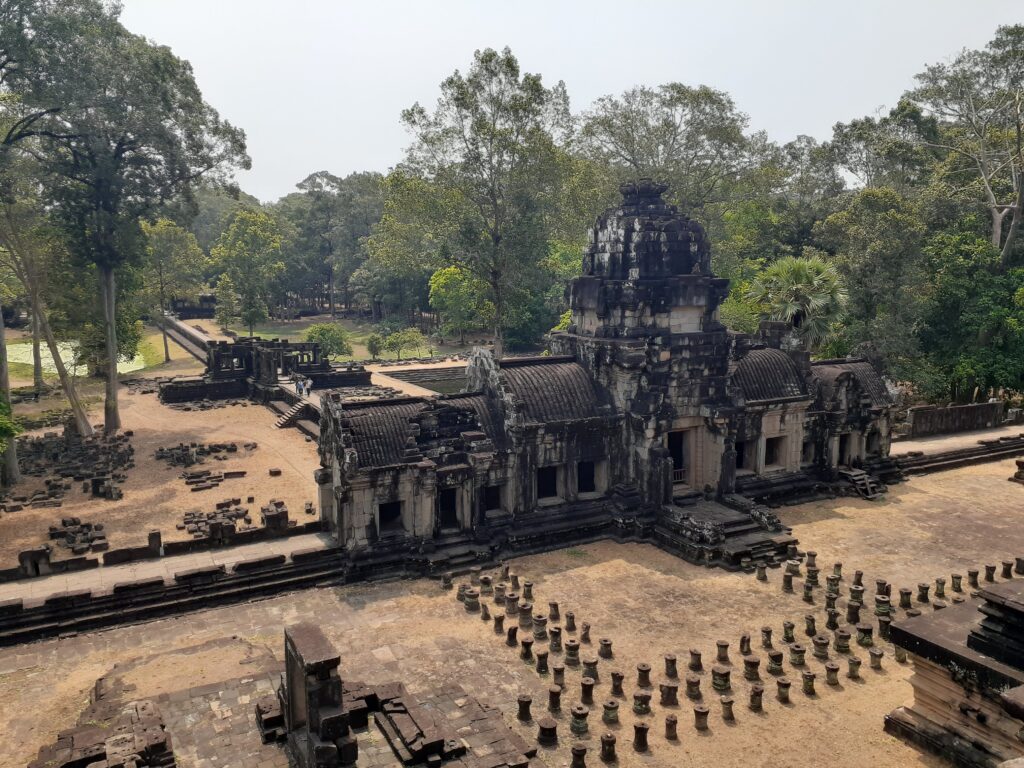
The East Gate seen from the uppermost level.
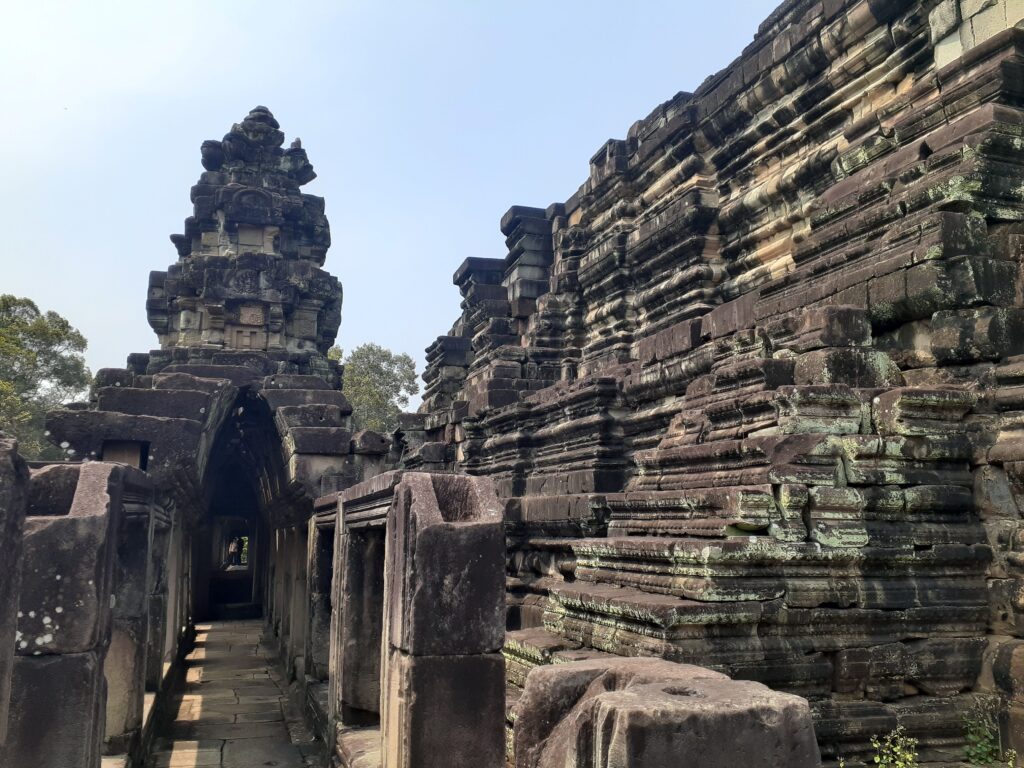
The topmost terrace is open and you can walk around in circles. Unfortunately, it is not possible to climb up to the central shrine at present. However, some worshippers equipped with lotus flowers made me feel that the faith is still alive.
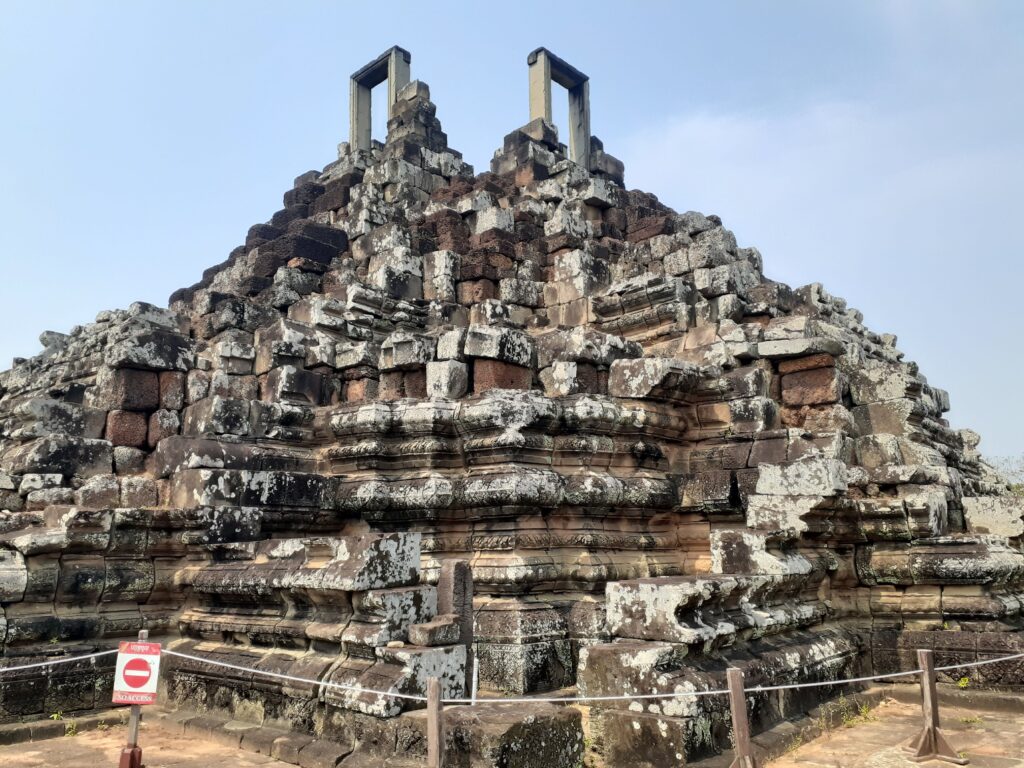
The central main hall is exactly like the top of a mountain. It may have originally housed a pagoda-shaped shrine, as in other Angkor temples, as a kind of door frame has been preserved.
Phimeanakes Temple
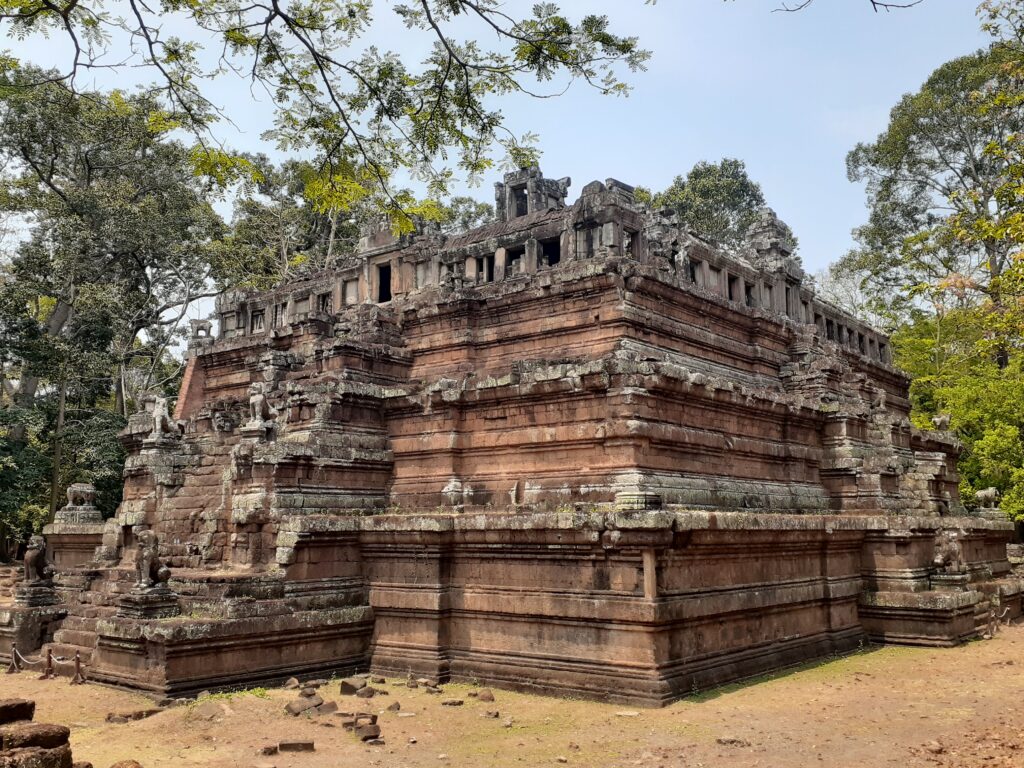
A Hindu temple built as a three-storey pyramid, located north of Ba Phuong Temple, it was constructed at the end of the 10th century during the reign of Rajendravarman (941-968) and later completed by Suryavarman I. The pyramid has a tower at the top and a cloister at the uppermost level.
Visitors could walk around the temple, but could not climb the pyramid. It is located on the way to the Terrace of the Elephants after the visit to Bur Phuong. You cannot go inside, but the exterior is beautiful and it is a good spot to take photos.
Sras Srei (Reservoir)

Located on the way from the Baphuon to the Elephant Terrace. It is a large rectangular reservoir and reminded me of the pools I saw at the ruins of ancient Roman cities in Turkey.
Terrace of the Elephants
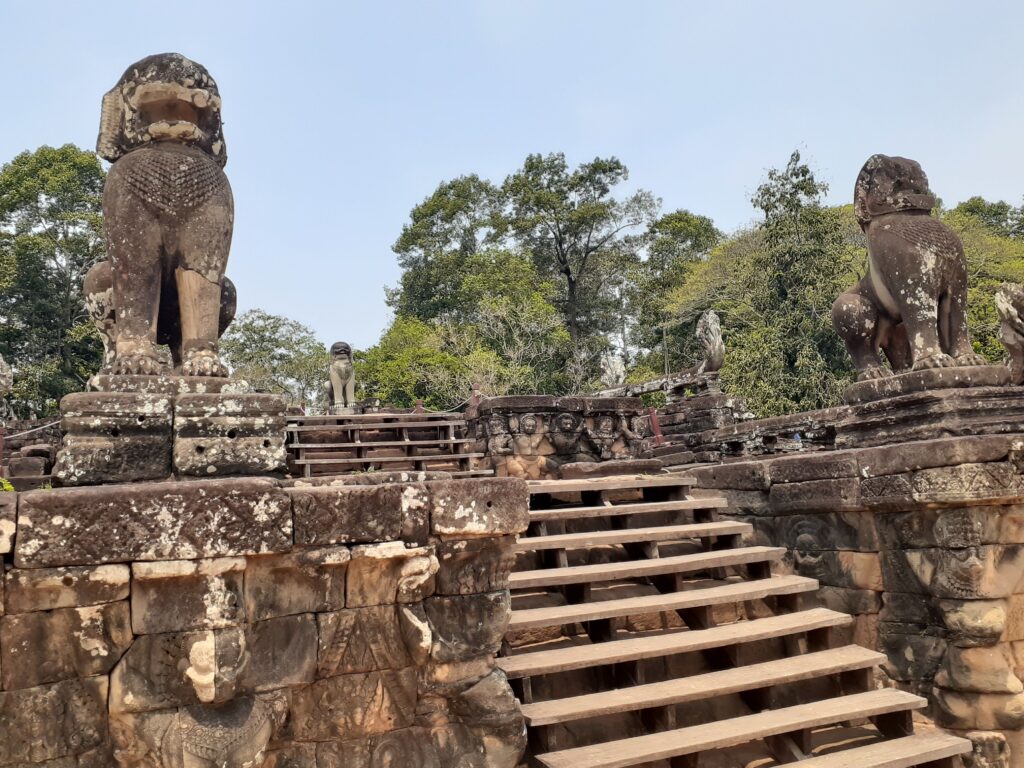
This terrace is about 3 m high and 300 m long, and is called the Terrace of the Elephants after the elephant reliefs on its walls.
It was built at the end of the 12th century by Jayavarman VII (reigned 1181-1220). From the Terrace of the Elephants, the West Road leads to the Gate of Victory. It was on this terrace that the king saw off his army departing for battle and welcomed his triumphant soldiers.
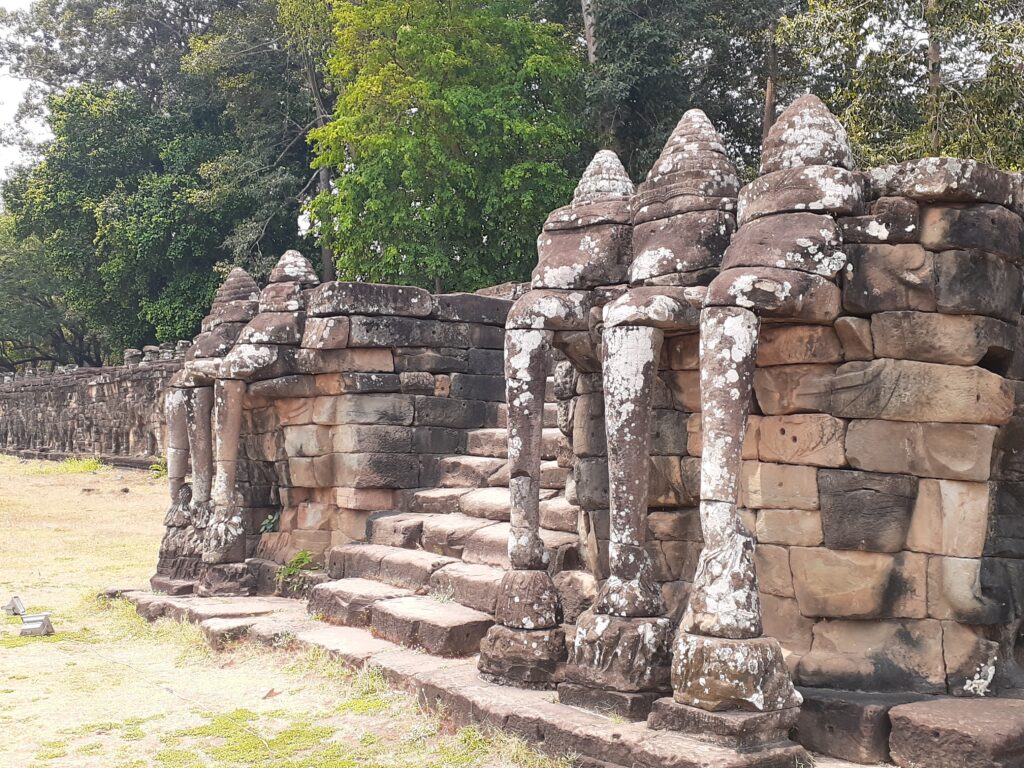
The elephant terrace, which functioned as a giant reviewing platform, has a parapet of the snake god Naga stretching across the top, with balconies in the middle and at both ends. The stairs are decorated with elephant motifs on both sides.
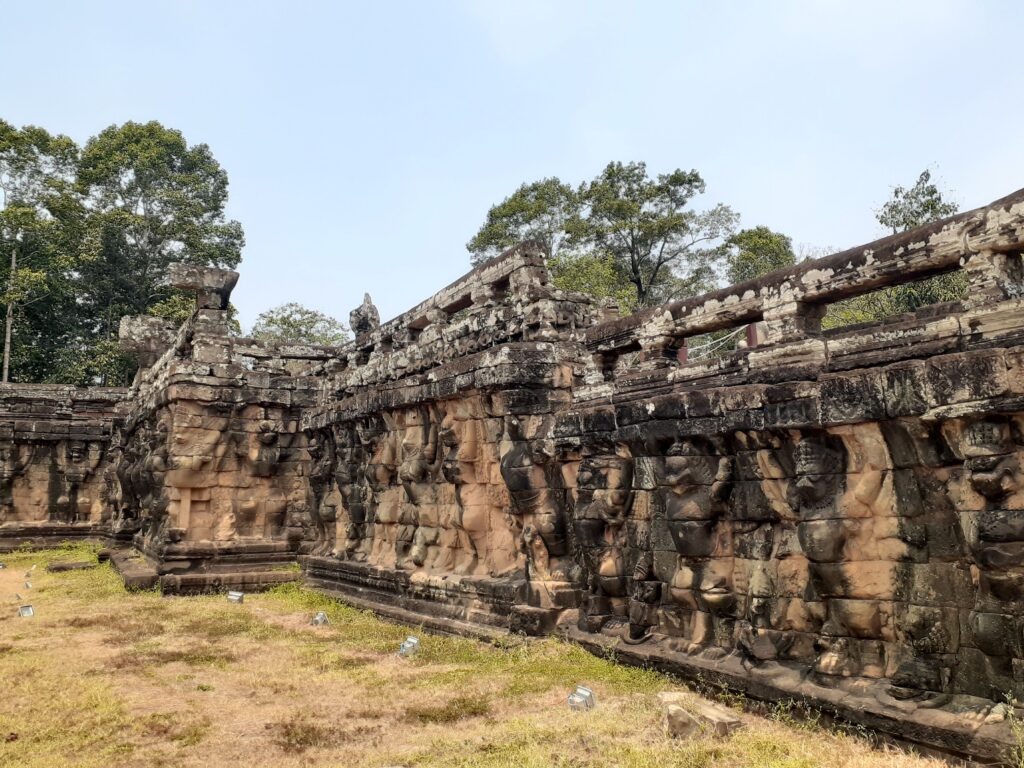
The side walls are carved with reliefs of garudas and the marching elephants of Khmer elephant messengers.
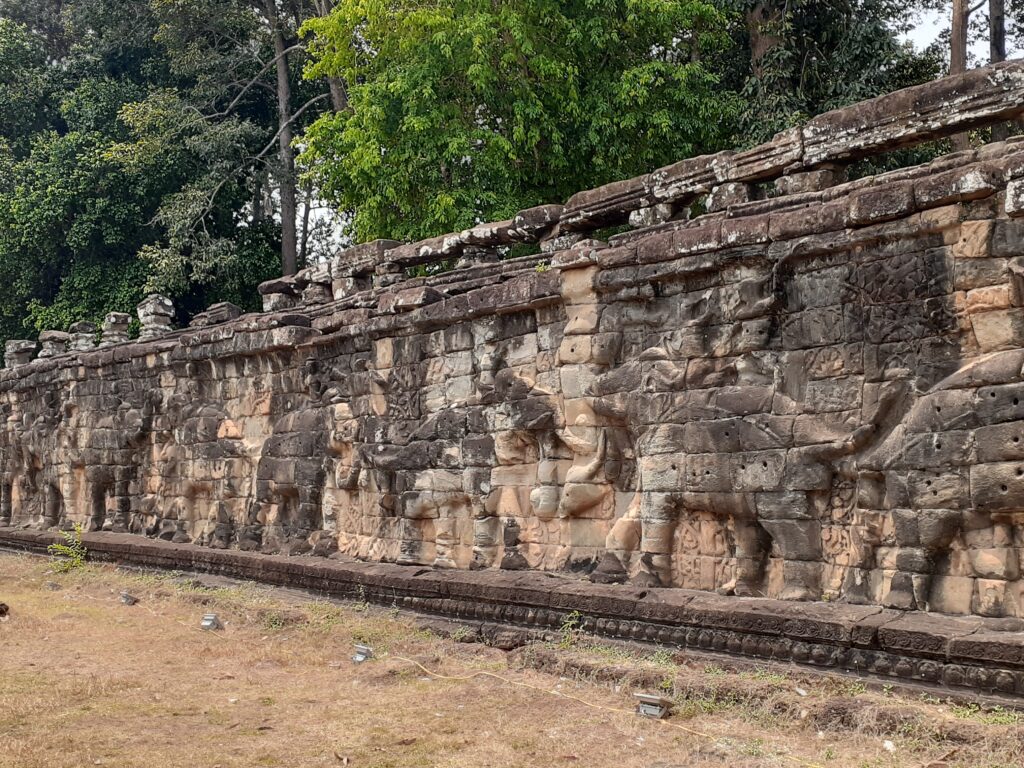
Terrace of The Leper King (Preah Ponlea Sdach Komlong)
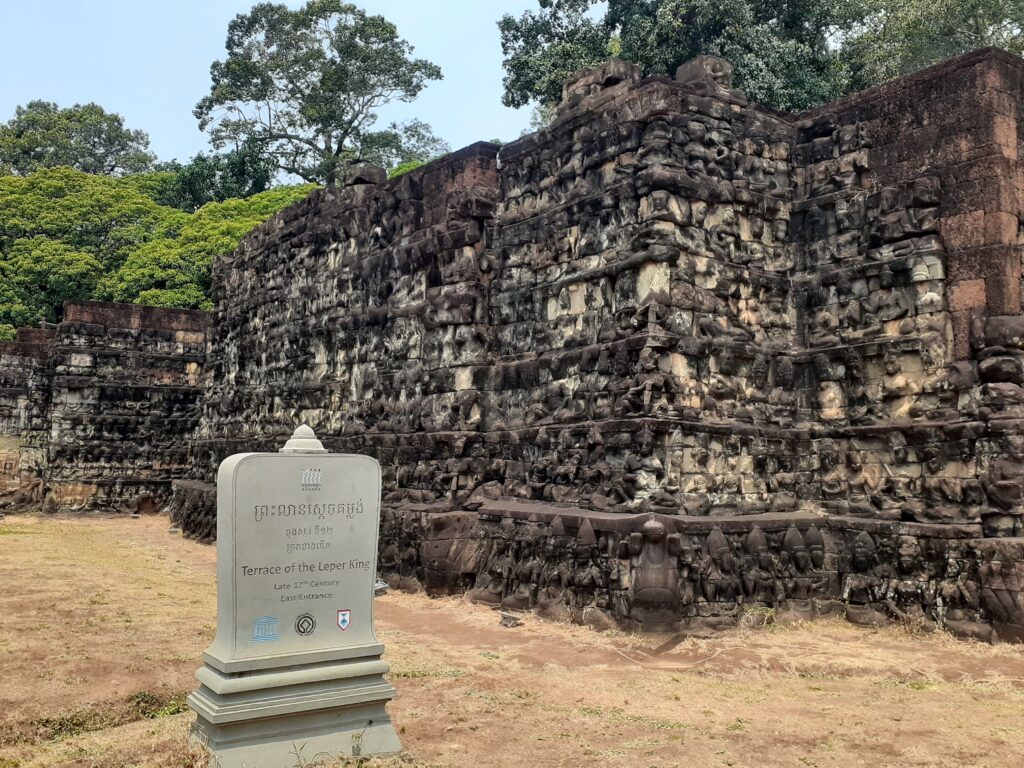
To the north of the Elephant Terrace is the Terrace of the Leper King.
It was built in the Bayon style during the reign of King Jayavarman VII. The name ‘Terrace of the Leper King’ is the subject of various theories, but it is said to derive from the statues found at the site.

The highlight of the site is the vividly carved three-dimensional reliefs on the walls. Devata and Asura statues are carved all over the wall.
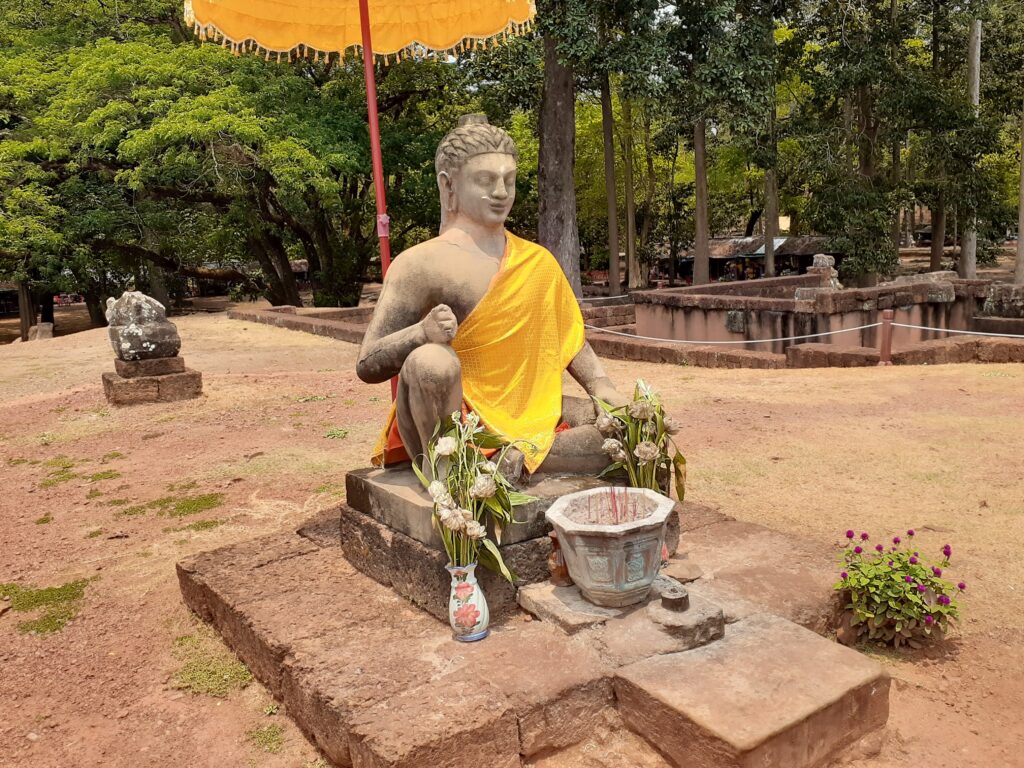
At the top of the terrace is a Buddha statue, but there is nothing special to see.
Other Angkor Sites
We spent three nights in Siem Reap this time and cycled around the Angkor monuments daily. On the first day, we visited Angkor Wat and the Baphuon temple in Angkor Thom.
We continued from the Baphuon temple on day two so please continue with the article Angkor ruins: day two. Thanks!
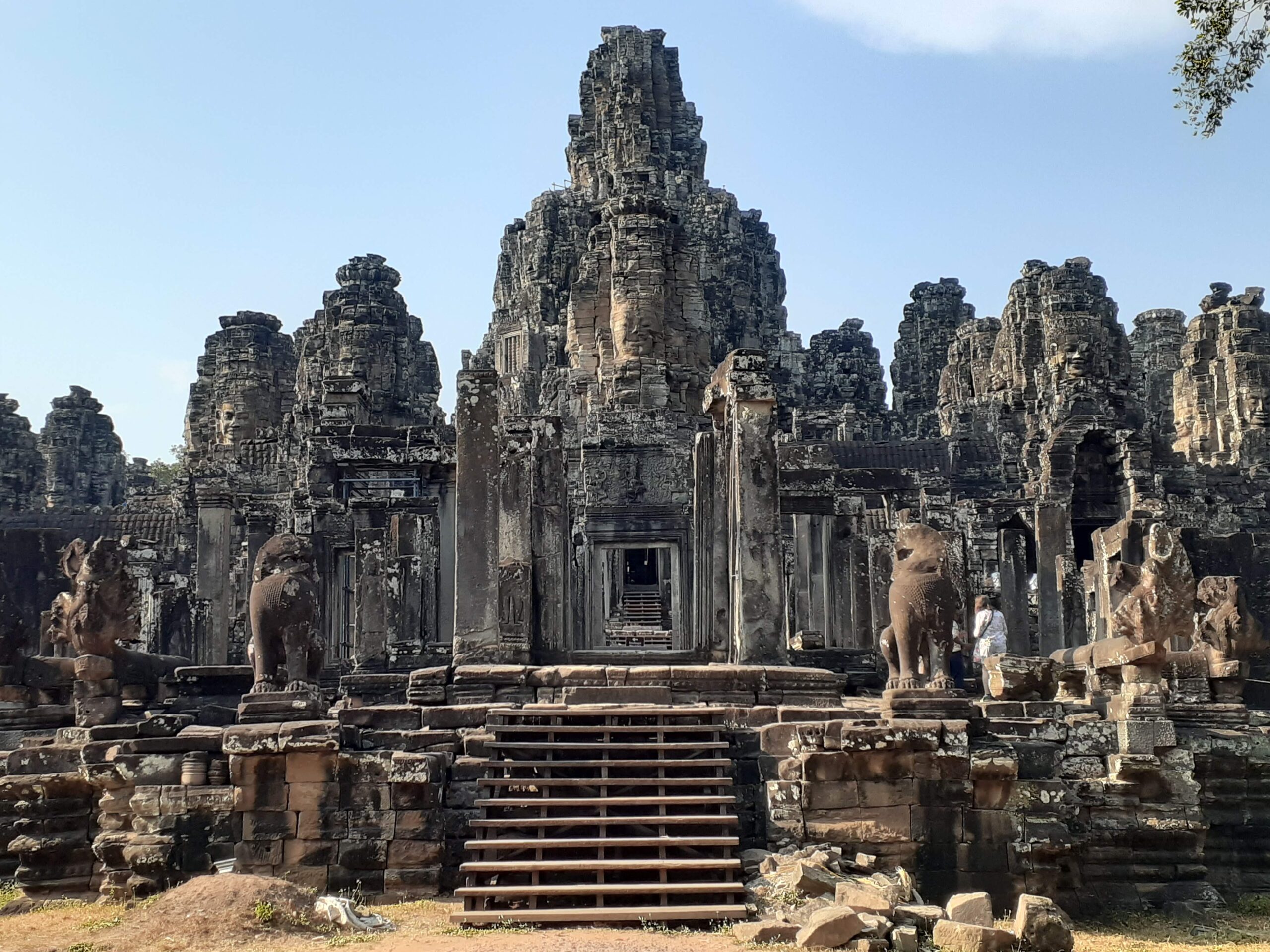


Comment